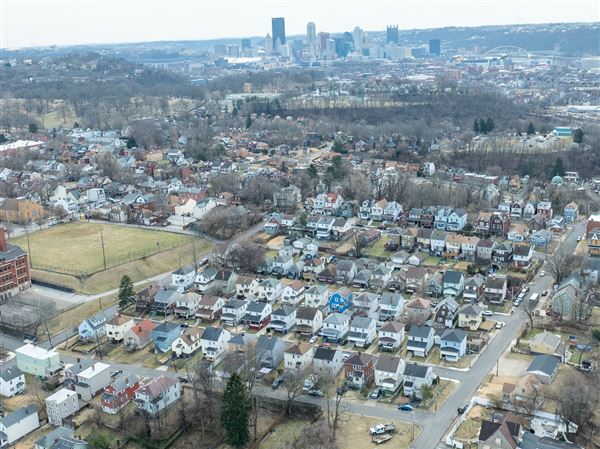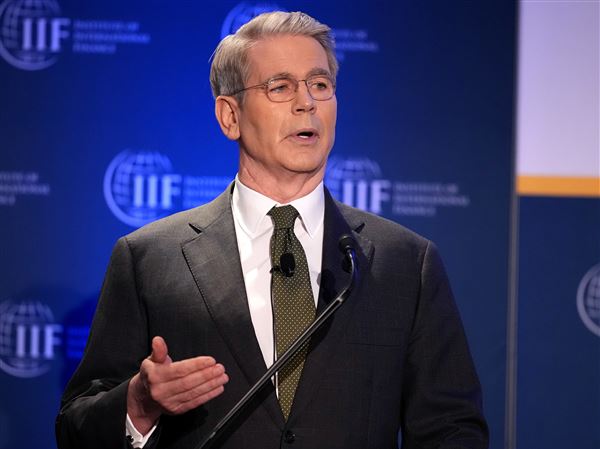The late Lester B. Lave's landmark research in the 1970s that found unexpectedly high health damage from air pollution was so trailblazing that he almost lost his job as a Carnegie Mellon University economist.
He went on to a stellar academic career at CMU because then-university president Richard Cyert refused to bow to the pressure and fire him.
Over the next four decades, more expansive studies would produce similar results, while also drawing criticism from smokestack corporations, power plant operators and even politicians that the proclaimed death rates from air pollution were impossibly high, statistically flawed, or the exaggerations of environmentalists.
But 200 epidemiological and scientific studies now showing predictable increases in mortality for each increase in fine particulates in the air have settled the matter.
C. Arden Pope III, who spoke Thursday during CMU's Distinguished Lecturer Series, said the numbers are clear. Air pollution each year kills as many people as does smoking. While smoking is riskier, only 20 percent of the population smokes. But everyone breathes.
"What does this tell us about Lester Lave's work? We should have just listened to him," the renowned Brigham Young University economist said in the lecture on the history of air pollution research.
Mr. Pope is the coauthor of seminal studies on fine-particulate air pollution, including the Harvard Six Cities study that's the foundation of U.S. Environmental Protection Agency regulations for fine-particulate pollution -- the small particles resulting from smokestack pollution that are drawn deep into the lungs, then into the blood, resulting in respiratory and heart disease and lung cancer.
He said the Pittsburgh area, one of the nation's most polluted, along with the Ohio River Valley, "has a ways to go," in reducing pollution levels and preventing excess disease and death. "There are areas in Pittsburgh with air pollution levels that are too high, at least in my judgment."
Neil Donahue, director of CMU's Center for Atmospheric Particle Studies, said the works of "Dr. Pope have been enormously important. It is always great to see someone of that stature talking here.
"He graciously alluded in his talk to the work by Lester Lave, and it was poignant to see that," he said. "Lester's work I wouldn't say was ignored, but once people figured out that fine particles actually were killing people, they sat up and took notice. Lester's association between air pollution and health outcomes is quite clear." Lave died May 11, 2011.
In 2010, Mr. Pope reviewed the numbers the Pittsburgh Post-Gazette calculated on age-adjusted mortality rates for heart and respiratory disease and lung cancer to determine the potential impact of air pollution on the 3 million people, from 2000 through 2008, in 14 counties of southwestern Pennsylvania. Mr. Pope's calculation of 14,250 people closely matched the Post-Gazette's total in its 2010 Mapping Mortality series of 14,636 deaths, although the Post-Gazette further reduced that number to about 12,000 due to elevated smoking in the region among women.
The first Pope study calculated death rates and hospitalizations when a steel mill in a Utah valley was operating, and then when it was shut down from 1986 to 1987. Other historic pollution events occurred in 1952 in London, causing as many as 12,000 excess deaths, and in 1948 in Donora, with 22 deaths caused by toxic smog from zinc and steel mills, leading to federal action to control pollution.
Mr. Pope, who has participated in 150 studies, said the World Health Organization's Global Burden of Disease report lists smoking, indoor pollution from fuel burning and air pollution as three of the top 10 leading risk factors for disease worldwide.
While it costs the EPA $7 billion a year to regulate air pollution, the benefits range from $19 billion to $167 billion, which he said is an "abnormally large benefit due to reduced mortality." Pollution controls, he said, save tens of thousands of lives a year.
"The bigger the decline in air pollution, the greater the increase in life expectancy," he said. "There is no question that the efforts we've made, including the efforts of the EPA, have contributed to the success we've had in reducing air pollution."
First Published: March 11, 2013, 8:00 a.m.















